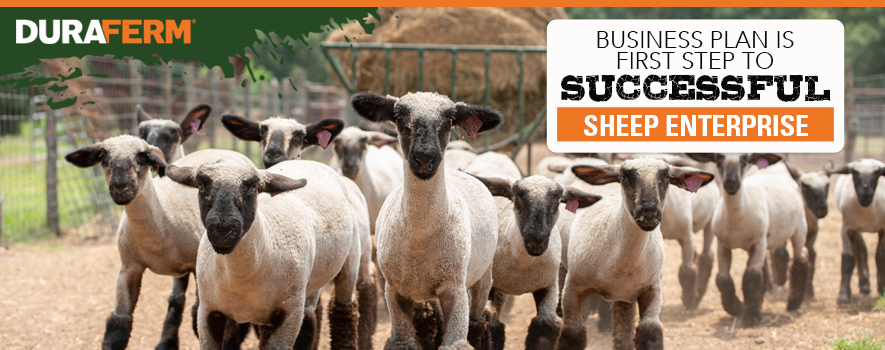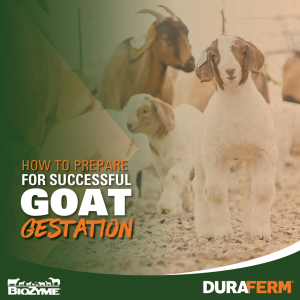
There’s no business like the show lamb business. But when getting into the sheep business, or any livestock enterprise, it is important to remember that it is indeed a business. Every successful business needs to start with two things: a business plan and a set of goals.
Successful club lamb producer and third generation agribusinessman Tyson Rule from Hawarden, Iowa, said sheep and lamb producers must pencil out a budget and understand their business goals when establishing an operation. He emphasized the importance of following a business plan.
“The biggest decision is cash flow and being able to manage cash flow,” Rule said. “Understanding the budgeting side of what input costs should be and how much money you should spend on feed versus how much money you should spend on bedding, to genetics to reinvesting to breeding decisions. A lot of them go off their gut feeling rather than from a true business aspect of it.”
Establishing a business plan can be as simple or as complex as a person wants to make it. You can get out your legal pad and start recording goals, proposed budgets and expected income. Or you can meet with a certified financial planner or other mentor to work out a plan. The most important thing is that you have an established plan and that it is written down.
In addition to a business plan that shows your financial goals, it should also show your marketing plan. In the livestock sector, many options exist. Do you plan to sell directly from the farm? Will you sell online or have a live sale? Rule says for those just getting started with their show lamb enterprise, they must thoroughly think about the basic business principle of supply and demand.
“What is the demand out there? And what is it going to cost to supply them? You have to have a supply and a product that has proven performance before people are going to come. That is the biggest challenge,” he explained. “Do I make them, and the buyers will come? Or do I try to get customers to come in and work on the backside?”
Rule suggests for a beginning producer looking to market upwards of 40 show prospects in a year to start small and work his or her way up. He said to make a goal of raising 10-15 of the lambs. Work with a network of producers you know and trust to buy and sell lambs to your customers to fill the remainder of your orders.
“If you are trying to build a customer base up, it is easier to do that through buying and trading. Then as you build them up, convert over to your own offspring that you are raising. That helps to manage cash flow early on. If you have orders for 10 lambs at $1,000, you know you won’t spend $13,000 in expenses raising them,” he said.
Genetics that Work
Once a producer does build up his or her flock, it is time to start making some breeding decisions. Rule says using advanced reproductive technologies like artificial insemination is the best method to get the most return on your investment and stay competitive in the club lamb market. As most breeding rams might only stay popular for two to three seasons, he said A.I. makes sense because breeders can utilize the most popular sires at a small investment rather than purchasing a ram.
“A producer can have better lambs so much faster using $50,000 to $500,000 elite A.I. sires than they could ever have bought a cleanup buck for $5,000 to $15,000. We are big proponents that A.I. is the most economical way to increase your genetics the fastest and to have a more saleable product, whether you have two ewes or 200. It makes it hard for a producer to stay competitive with just using home-raised rams, but for a couple hundred dollars they can breed to a $250,000 ram,” he said.
When it comes to the ewe-side of the genetic equation, he said he bases his culling decisions strictly on ewe health and cash flow. Based on his business plan, Rule knows what it costs him per year to maintain a ewe, so he knows what to expect from her financially. Based on his input costs of feed, labor, facilities, health and breeding, he expects a set minimal average by her second lamb crop. If she can’t meet those expectations, she is culled.
One thing that has helped Rule’s flock achieve his goals is his nutrition program, including the DuraFerm® Sheep Concept•Aid® Protein Tubs. He said the DuraFerm Tubs have increased conception rates in both his A.I. and embryo programs.
Regardless of if you are getting into the high caliber show lamb business or the commercial sheep business, it is vital to establish goals, set a business plan and a budget for your operation. Rule also encourages finding someone to confide in and talk through your goals with.
“Find a producer that has been successful that you mesh well with on personalities. Find someone you can rely on to mentor to you, that has made all the bad decisions already and can help you not recreate the wheel,” he advises.
Starting up any business comes with challenges. Starting a livestock enterprise with variable expenses and unknown inventories can be even more challenging. However, with a good business plan and a set of goals, a good mentor and a good nutrition program, your business can be the success you’ve always dreamed of.


